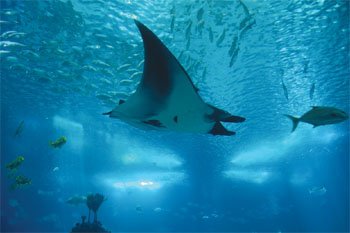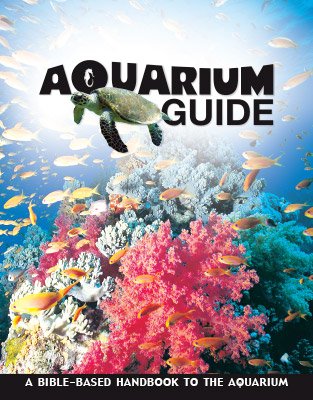Manta Ray
Flexible horns are used to direct plankton and water into the manta’s very broad and wide mouth.
Design

During embryonic development, part of the tissue that becomes the pectoral fins of the manta ray breaks away and moves forward, surrounding the mouth. This structure develops into horns. These flexible horns are used to direct plankton and water into the manta’s very broad and wide mouth. To make it more streamlined when swimming, it is able to curl its horns up.
Features
- The manta ray is most easily recognized by its large pectoral “wings.”
- It also has “horns” that protrude from either side of its head.
- The manta ray is usually black above and white below, but can be blue on its back.
Fun Facts
- This ray has a number of other names, including Atlantic manta, devil ray, devilfish, and giant manta.
- The manta ray is the largest of the rays.
- This species is completely harmless, though its extremely large size can be very intimidating.
CLASS: Chondrichthyes (cartilaginous fish—sharks, skates, and rays)
ORDER: Rajiformes (rays, sawfishes, and skates)
FAMILY: Mobulidae (devil rays and manta rays)
GENUS/SPECIES: Manta birostris
Size: Wingspan 17–22 ft (5.2–6.7 m)
Weight: 2,640–3,080 lbs (1,200–1,400 kg)
Depth: Near the surface, down to 395 ft (120 m)
Diet: Shrimp, plankton, small fish
Habitat: Tropical and temperate waters near the coasts of the oceans
Aquarium Guide
With fun facts about more than 100 animals, this long-awaited Aquarium Guide includes beautiful pictures and reveals the incredible facts and design features that point to our amazing Creator. This handy size guide is excellent for school field trips and family trips to your favorite aquarium!
Browse Kids Book- © 2024 Answers in Genesis
- Privacy Policy
- Contact
- About

